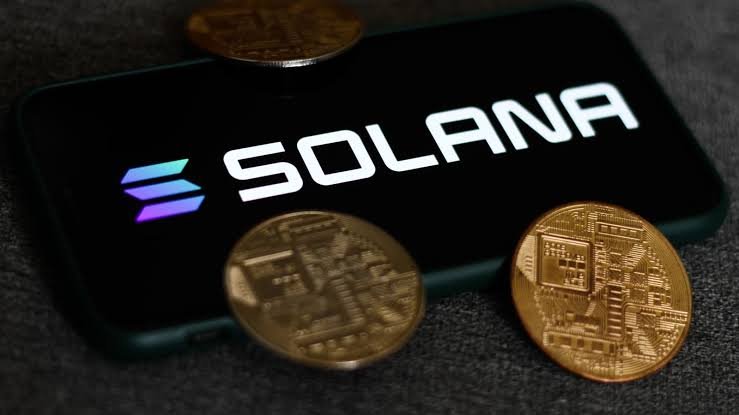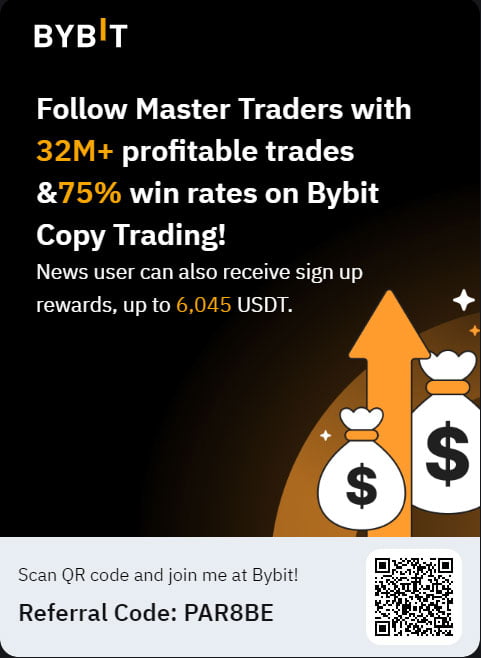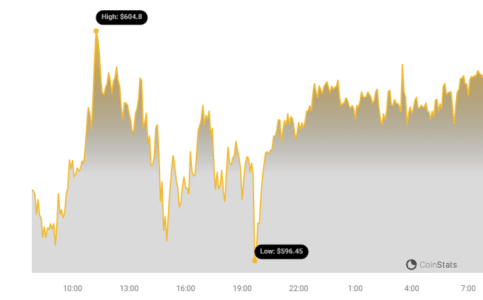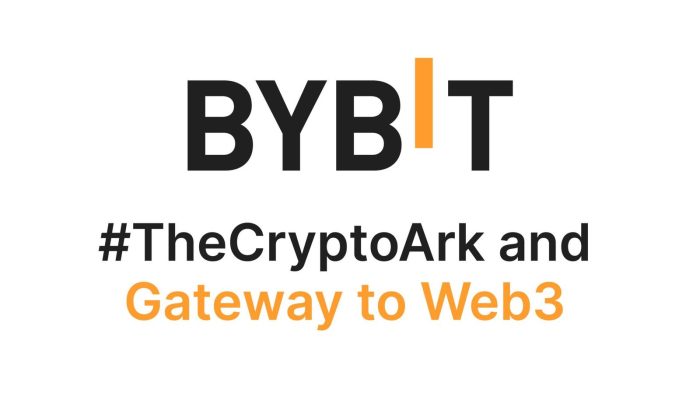The Cboe has formally requested the SEC to approve the launch of a Solana-based exchange-traded fund (ETF) by asset managers VanEck and 21Shares. On Monday, the exchange submitted two 19b-4 filings to the SEC, seeking permission to list these Solana-backed products. Once the SEC acknowledges the filing, it has 240 days to make a decision […]
The post Solana ETF Filings are in Full Swing: SOL vs SOL ETF and More appeared first on Coindoo.
The Cboe has formally requested the SEC to approve the launch of a Solana-based exchange-traded fund (ETF) by asset managers VanEck and 21Shares. On Monday, the exchange submitted two 19b-4 filings to the SEC, seeking permission to list these Solana-backed products. Once the SEC acknowledges the filing, it has 240 days to make a decision on the ETFs.
Rob Marocco of Cboe Global Markets commented that following the successful listing of the first U.S. spot Bitcoin ETFs on the platform and obtaining SEC approval for rule filings to list spot Ether ETFs, they are now addressing the growing investor interest in Solana, which is one of the most actively traded cryptocurrencies after Bitcoin and Ether.
-----Cryptonews AD----->>>Sign up for a Bybit account and claim exclusive rewards from the Bybit referral program! Plus, claim up to 6,045 USDT bonus at . https://www.bybit.com/invite?ref=PAR8BE
<<<-----Cryptonews AD-----
Cboe currently lists six out of the ten existing spot Bitcoin ETFs, including those from Fidelity, Ark/21Shares, and VanEck. It will also be the listing platform for five spot Ether ETFs if they receive approval.
Industry experts anticipate the SEC will approve Solana ETFs soon, with several issuers submitting updated S-1 forms on Friday and earlier Monday. There may still be further amendments as the latest filings do not include fee information.
In June, both VanEck and 21Shares filed an S-1 form, a necessary step for offering a new security on the market. The 19b-4 filing, submitted to notify the SEC of a proposed rule change by a self-regulatory organization.
What does it mean for SOL price?
Whilst SOL price currently hovers above $138 SOL/USDT on Gate.io, the prospect for the token being added to the ETF bandwagon is nothing short of positive. If approved, this would mean that TradFi institutional money gain access to the Solana’s native SOL token and can acquire and trade it. This might propel SOL to a new ATH, beyond its previously achieved record of $258 that it reached back in 2021.
Conversely, if the ETF applications are declined, one should not interpret it as the end for Solana. The network itself continues to show high activity, first becoming the main playground for new NFTs, and now turning to meme coins as the trampoline that takes it to the next level.
That being said, Solana is not the perfect blockchain. It has its own pitfalls which should hopefully be soon resolved by the expansive community of developers that participate in blockchain’s improvement. With the right updates, Solana should soon depart from occurrences where the network fails to work and needs to be reset.
What is Solana?
Solana is a blockchain designed to support dApps and cryptocurrencies. It was founded in 2017 by Anatoly Yakovenko, who sought to create a more scalable and efficient blockchain compared to existing platforms like Bitcoin and Ethereum. Solana’s unique architecture allows it to process transactions at a speed and cost that are significantly better than its predecessors, making it a promising contender in the blockchain space.
At the core of Solana’s technology is a novel consensus mechanism known as Proof of History (PoH). This system allows the blockchain to maintain a chronological record of events, enhancing the efficiency and throughput of the network. PoH works alongside Solana’s Proof of Stake (PoS) system to secure the network, validate transactions, and produce new blocks. This combination enables Solana to handle thousands of transactions per second, with block times of just 400 milliseconds and fees that are a fraction of a cent.
Solana’s high throughput and low costs have attracted a vibrant ecosystem of developers and projects. From decentralized finance (DeFi) protocols and non-fungible token (NFT) marketplaces to various other dApps, Solana supports a wide range of applications. The platform’s scalability ensures that it can accommodate significant growth without compromising on speed or cost, making it an attractive option for both developers and users.
Additionally, Solana’s ecosystem is supported by a robust community and a network of validators that help secure the blockchain. The Solana Foundation, a non-profit organization, plays a crucial role in the ongoing development and promotion of the platform. Solana’s innovative approach and strong performance metrics position it as a platform for the next generation of decentralized applications. Whether it pans out to achieve, remains to be seen.
How to buy SOL?
Buying Solana (SOL) is a straightforward process, especially on cryptocurrency exchanges like Gate.io. It is a well-known and user-friendly platform that provides access to a wide range of cryptocurrencies, including Solana. Here’s a step-by-step guide that takes you through the process of purchasing Solana.
First, you’ll need to create an account on Gate.io. Visit the Gate.io website and click on the “Sign Up” button. You’ll be asked to provide an email address and create a password. After entering these details, you will need to verify your email by clicking on a confirmation link sent to your inbox. Once your account is verified, you can proceed to secure it by setting up two-factor authentication (2FA), which adds an extra layer of security to your account.
After securing your account, the next step is to deposit funds. Gate.io supports various deposit methods, including cryptocurrency deposits and, in some regions, fiat currency deposits via bank transfer or credit card. To deposit funds, navigate to the “Wallet” section, select “Deposit,” and choose your preferred deposit method. If you’re depositing cryptocurrency, you’ll need to transfer your coins from your wallet to the deposit address provided by Gate.io. For fiat deposits, follow the on-screen instructions to complete the transaction.
Once your account is funded, you can proceed to buy Solana. Go to the trading section of Gate.io, usually found under “Markets” or “Trade.” Search for the SOL trading pair you want, such as SOL/USDT, and select it. You’ll be directed to the trading interface where you can place an order. If you want to buy Solana at the current market price, select the market order option, enter the amount of SOL you wish to purchase, and confirm the transaction. If you prefer to set a specific price, choose the limit order option, set your desired price, and place the order, which will go in effect as soon as SOL reached the set price.
After completing the purchase, your Solana will be available in your Gate.io wallet. From there, you can choose to keep your SOL on the exchange or transfer it to an external wallet for added security.
Buying SOL vs Buying SOL ETF
Buying Solana (SOL) on an exchange and purchasing a Solana Exchange-Traded Fund (ETF) are two distinct methods of investment, each with its own advantages and considerations. Here’s a detailed versus comparison to help you understand the main differences:
Buying Solana on an Exchange
Ownership and Control: When you buy Solana directly on a cryptocurrency exchange like Gate.io, you are purchasing the actual cryptocurrency. This means you own the digital asset and have full control over it. You can transfer it to your personal wallet, trade it, use it in decentralized applications, or hold it as a long-term investment.
Direct Exposure: Purchasing SOL directly gives you direct exposure to the price movements of Solana. If the value of Solana increases, the value of your holdings increases accordingly, and vice versa.
Usability: Owning SOL allows you to participate in the Solana ecosystem. You can use SOL to pay for transaction fees, participate in staking to earn rewards, and engage with various decentralized applications (dApps) built on the Solana network.
Risk and Security: Direct ownership requires you to manage the security of your assets. This includes safeguarding private keys and possibly using hardware wallets to protect your investment from hacks and theft.
Buying Solana as a Solana ETF
Indirect Ownership: When you buy a Solana ETF, you are purchasing shares of a fund that tracks the price of Solana. The ETF holds Solana or Solana-related assets, and its value reflects the performance of these holdings. You do not own the underlying Solana tokens directly.
Ease of Access: ETFs are traded on traditional stock exchanges, making them accessible through standard brokerage accounts. This can be convenient for investors who are more comfortable with traditional financial markets and may not want to navigate the complexities of cryptocurrency exchanges.
Diversification and Management: Some Solana ETFs might include a diversified portfolio of crypto assets or Solana-related investments. This can offer a level of diversification and professional management, potentially reducing the risks associated with holding a single cryptocurrency.
Regulation and Security: ETFs are subject to regulatory oversight and are managed by financial professionals. This can provide an added layer of security and confidence for investors who are concerned about the regulatory and security issues associated with direct cryptocurrency ownership.
Liquidity and Trading Hours: ETFs can be traded during regular market hours, providing liquidity and ease of trading that might be more limited in cryptocurrency markets, which operate 24/7 but can sometimes experience liquidity issues.
Summary
Direct Purchase on Exchange: Provides direct ownership and control over Solana, allowing for full participation in the Solana ecosystem.
Solana ETF: Offers indirect exposure through a regulated, professionally managed fund, accessible via traditional brokerage accounts, but does not grant direct ownership or usability of the cryptocurrency. Choosing between buying Solana directly or investing in a Solana ETF depends on your investment goals, risk tolerance, and comfort with managing digital assets.
The post Solana ETF Filings are in Full Swing: SOL vs SOL ETF and More appeared first on Coindoo.





